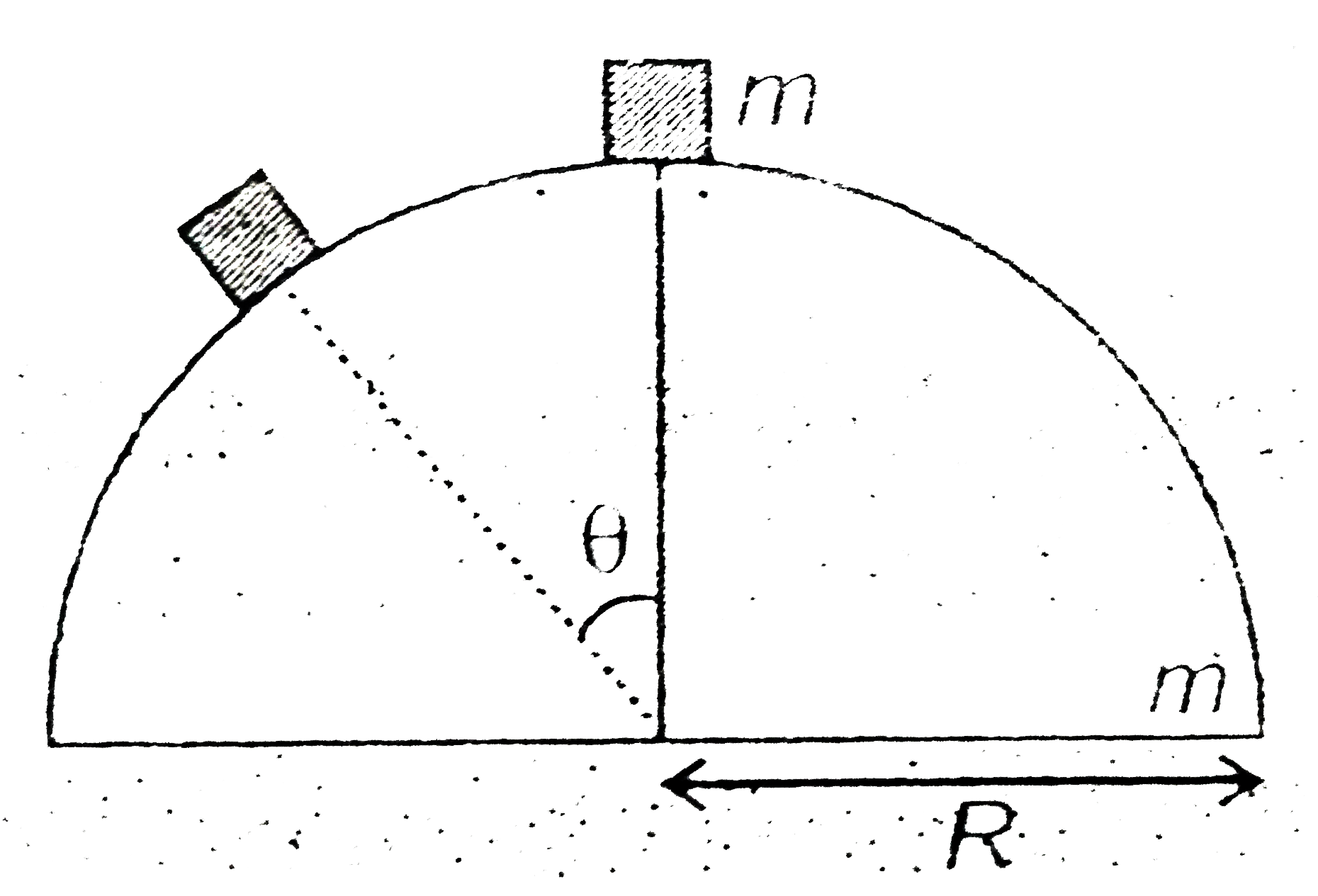A Young's double slit experiment uses a monochromatic light of wavelength λ. The intensity of each slit is same and is equal to I0. What will be the resultant intensity at a point where waves interfere at a path difference of λ2 ?
To solve the problem, we will follow these steps:
Step 1: Understand the Setup
We have a Young's double slit experiment with monochromatic light of wavelength λ. The intensity of light from each slit is I0.
Step 2: Identify the Path Difference
The problem states that we need to find the resultant intensity at a point where the path difference between the two waves is λ2.
Step 3: Relate Path Difference to Phase Difference
The phase difference ϕ can be calculated using the formula:
ϕ=2πλ×(path difference)
Substituting the given path difference:
ϕ=2πλ×λ2
This simplifies to:
ϕ=π
Step 4: Use the Resultant Intensity Formula
The resultant intensity I at a point where two waves interfere can be expressed as:
I=I0(cos2ϕ2)
Substituting ϕ=π:
I=I0(cos2π2)
Step 5: Calculate cos2π2
We know that:
cosπ2=0
Thus:
cos2π2=02=0
Step 6: Find the Resultant Intensity
Substituting back into the intensity formula:
I=I0×0=0
Conclusion
The resultant intensity at the point where the path difference is λ2 is:
I=0
This indicates that destructive interference occurs at this point.
---
We have a Young's double slit experiment with monochromatic light of wavelength λ. The intensity of light from each slit is I0.
The problem states that we need to find the resultant intensity at a point where the path difference between the two waves is λ2.
The phase difference ϕ can be calculated using the formula:
ϕ=2πλ×(path difference)
Substituting the given path difference:
ϕ=2πλ×λ2
This simplifies to:
ϕ=π
The resultant intensity I at a point where two waves interfere can be expressed as:
I=I0(cos2ϕ2)
Substituting ϕ=π:
I=I0(cos2π2)
We know that:
cosπ2=0
Thus:
cos2π2=02=0
Substituting back into the intensity formula:
I=I0×0=0
The resultant intensity at the point where the path difference is λ2 is:
I=0
This indicates that destructive interference occurs at this point.
Topper's Solved these Questions
- WAVE OPTICSBook:AAKASH INSTITUTE ENGLISHChapter:WAVE OPTICSExercise:Assignment (Section-A (objective type question(one option is correct)))
Explore 55 Videos
- WAVE OPTICSBook:AAKASH INSTITUTE ENGLISHChapter:WAVE OPTICSExercise:Assignment (Section-B (objective type question(one option is correct)))
Explore 5 Videos
- WAVE OPTICSBook:AAKASH INSTITUTE ENGLISHChapter:WAVE OPTICSExercise:Assignment (Section-J (Aakash Challengers question))
Explore 1 Video
- UNITS AND MEASUREMENTSBook:AAKASH INSTITUTE ENGLISHChapter:UNITS AND MEASUREMENTSExercise:ASSIGNMENT (SECTION - D)
Explore 15 Videos
- WAVESBook:AAKASH INSTITUTE ENGLISHChapter:WAVESExercise:ASSIGNMENT ( SECTION-D ( Assertion - Reason Type Questions ))
Explore 12 Videos
Similar Questions
In a Young's double slit set up using monochromatic light of wavelength λ the intensity of light at a point, where path difference is 2λ is found to be I0 What will be the intensity at a point when path different is λ/3 ?
View SolutionIn Young's double-slit experiment using monochromatic light of wavelength λ, the intensity of light at a point on the screen where path difference is λ, is K units. What is the intensity of lgight at a point where path difference is λ3.
View Solution
Knowledge Check
In young's double slit experiment using monochromatic light of wavelengths λ, the intensity of light at a point on the screen with path difference λ is M units. The intensity of light at a point where path difference is λ/3 is
AM2BM4CM8DM16
In Young.s double-slit experiment using monochromatic light of wavelength λ, the intensity of light at a point on the screen where path difference is λ, is K units. What is the intensity of light at a point where path difference is λ/3?
View SolutionA Young's double -slit experiment is performed using monochromatic light of wavelength λ. The intensity of light at a point on the screen, where the path difference is λ is K units. The intensity of light at a point where the path difference is λ6 is given by nK12, where n is an integer. The value of n is ____________
View Solution(a) (i) Two independent mono chromatic sources of light cannot produced a sustained interference pattern'. Give reason.
(ii) Light waves each of amplitude ''a'' and frequency ''w'', emanating from two coherent light sources superpose at a point. If the displacements due to these waves is given byy3=acosωtandy2=acos(ωt+ϕ) where ϕ is the phase difference between the two, obtain the expression for the resultant intensity at the point.
(b) In Young's double slit experiment, using monochromatic light of wavelength λ, the intensity of light at a point on the screen where path difference is λ, is K units. Find out the intensity of light at a point where path difference is λ/3.
View Solution(a) Why are coherent sources necessary to produce a sustained interference pattern ?
(b) In Young's double slit experiment using monochromatic light of wavelength λ, the intensity of light at a point on the screen where path difference is λ, is K units. Find out the intensity of light at a point where path difference is λ/3.
View SolutionIn Young's double slit experiment,the intensity at a point where the path difference is
View SolutionA particle is placed on the top of a hemispherical shell of same mass. Shell is free to move on the smooth ground. If particle is given a given a gentle push and reaches to angular position q as shown in figure then for an observer fixed on a shell, ratio of reaction force exerted by shell to pseudo force (as observed from shell) acting on particle, is

View SolutionIn the Young's double slit experiment using a monochromatic light of wavelength λ, the path difference (in terms of an integer n) corresponding to any point having half the peak
View Solution